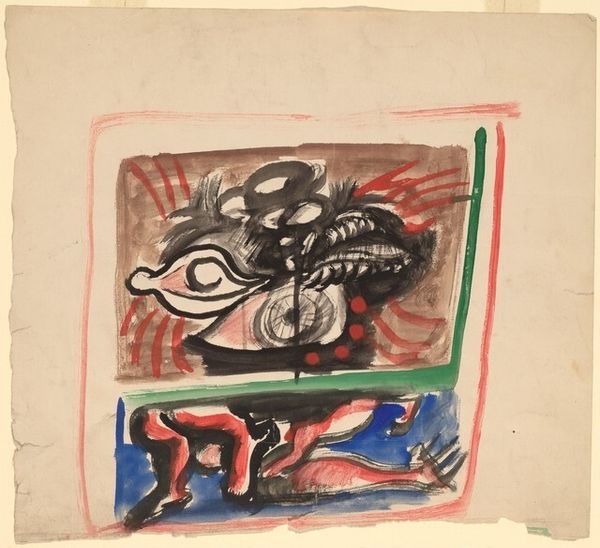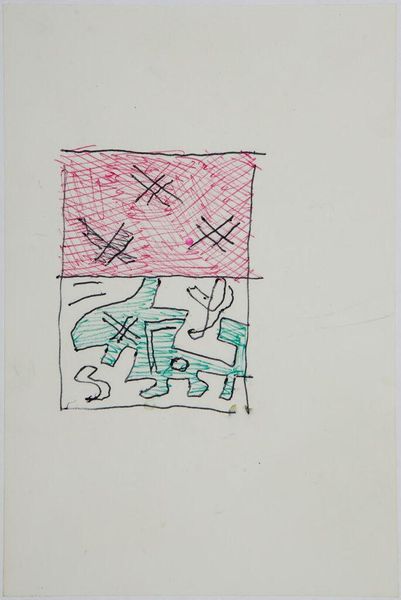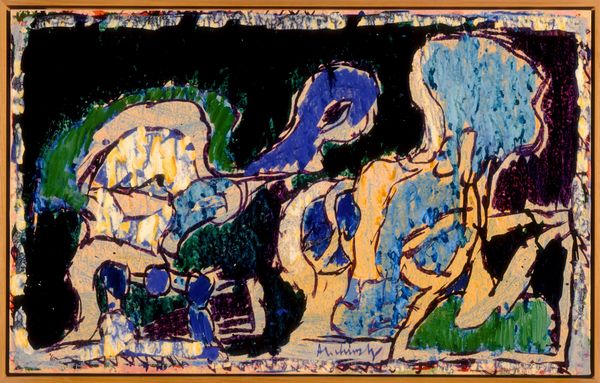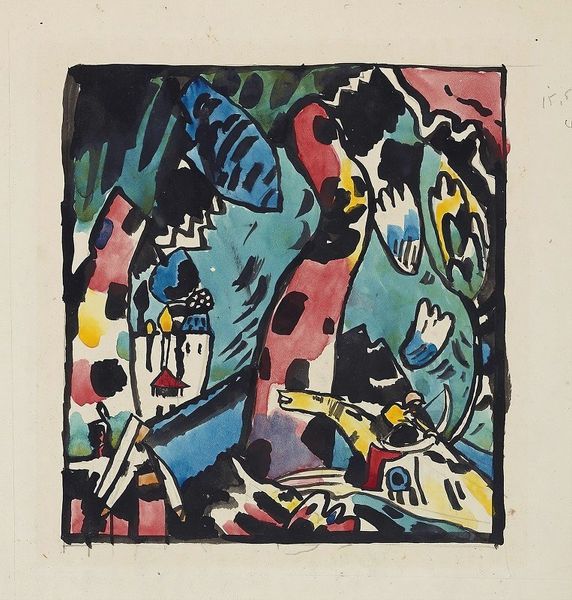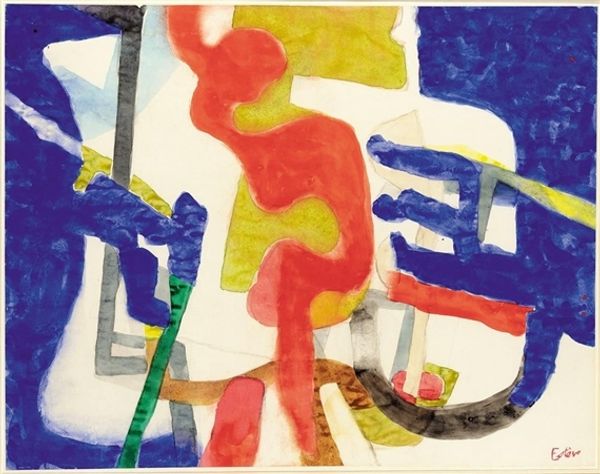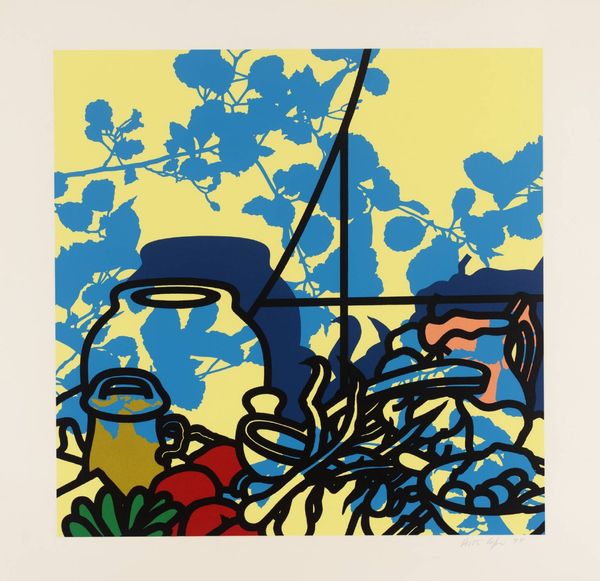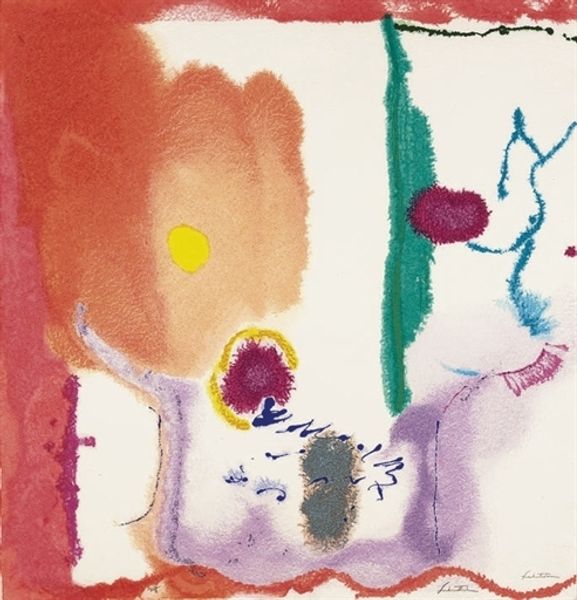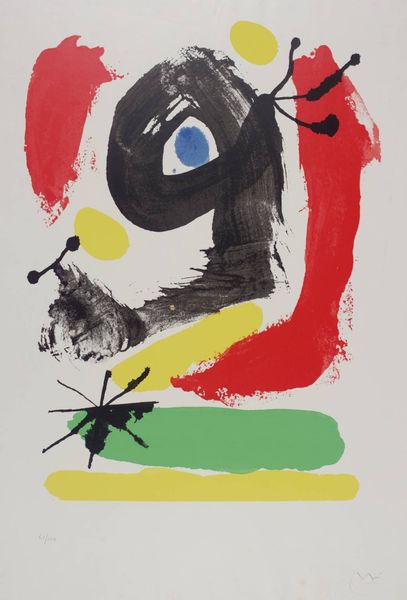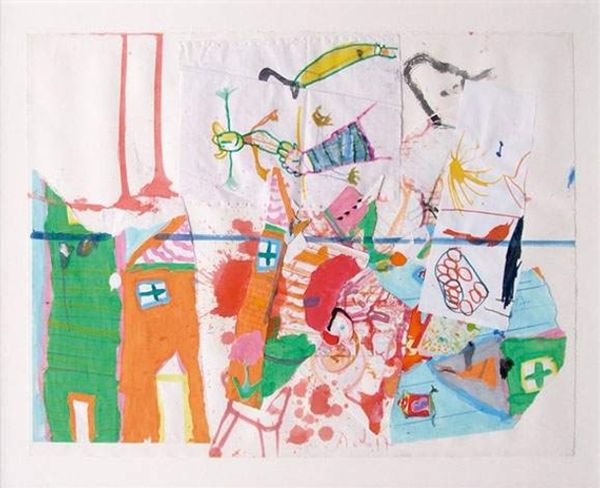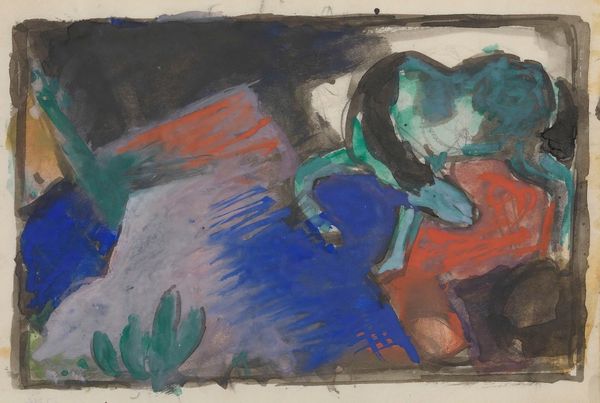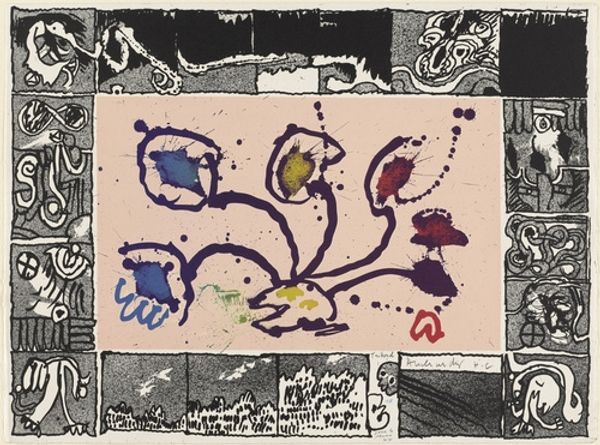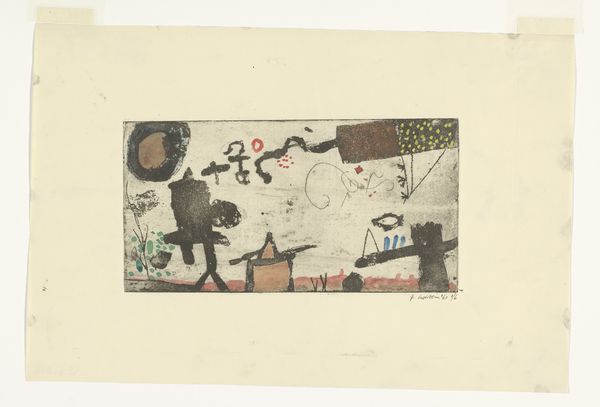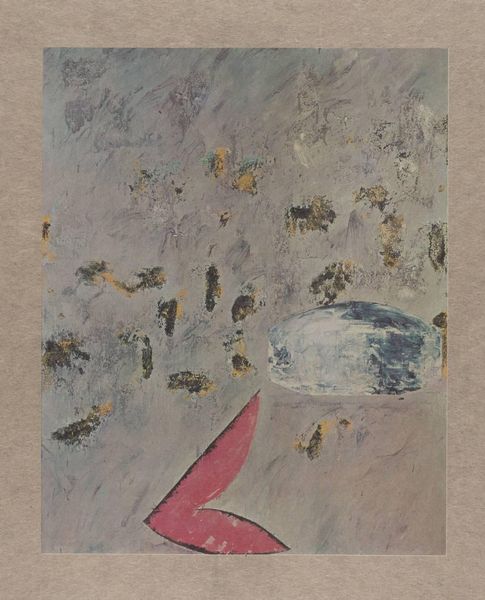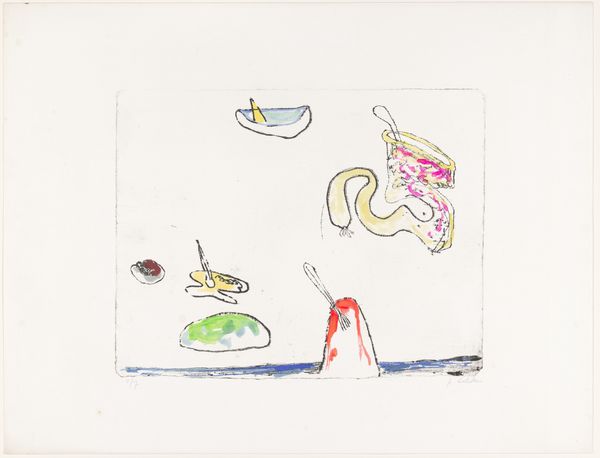
print, woodcut
#
art-nouveau
#
non-objective-art
# print
#
abstract
#
form
#
geometric
#
expressionism
#
woodcut
#
line
Copyright: Public Domain: Artvee
Editor: So, this is "Klänge," a 1913 woodcut print by Wassily Kandinsky. It feels… almost like a stage, with these abstracted figures and vibrant colors. What do you see in this piece? Curator: It's a powerful piece of visual poetry, isn't it? Beyond just representation, Kandinsky seeks to express inner spiritual realities. Think about the context: 1913. Europe on the brink of war. Old orders collapsing. "Klänge," meaning "sounds" or "resonances," embodies a yearning for a new, more intuitive language beyond the limitations of the material world. Editor: A new language… through abstraction? Curator: Exactly! Kandinsky believed that colors and forms could evoke emotions directly, like music. The jarring reds, the simplified figures… consider how these elements might reflect the anxieties and upheavals of his time, or how that influenced his desire to find an authentic artistic language rooted in something other than a simple representation. Editor: The figures on horseback… do they symbolize something specific? Curator: Possibly. We know Kandinsky often used the image of the horse and rider to represent spiritual progress, moving towards enlightenment. But look at how fractured they are, almost dissolving into the landscape. Do you think he suggests that traditional symbols of power and progress were being destabilized during that period? Editor: That's a fascinating point. So, instead of a literal depiction, it's more about capturing a feeling, a shift in consciousness? Curator: Precisely! "Klänge" invites us to engage with art on a deeply personal and emotional level, outside conventional social norms and representations. The Expressionists used abstraction as a tool to get at underlying truths beyond what one can literally see in the world. What do you take away from viewing this print in that context? Editor: It definitely reframes my initial reaction. It's not just abstract, it's actively challenging us to feel and think differently. Curator: Exactly. The personal is political, after all.
Comments
No comments
Be the first to comment and join the conversation on the ultimate creative platform.
